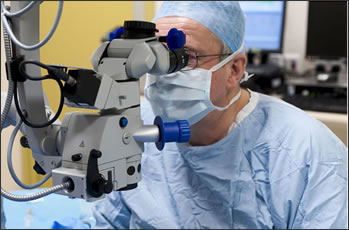
 |
||
 |
||
 |
||
Our Surgical Procedures
|
|||||||||
Cataracts May CauseCataract Symptoms may include:
|
Other CausesAlthough cataracts usually develop as part of the aging process (more than half of all Americans develop cataracts by age 80), they can also result from:
|
The Facts About Cataracts
 New advances and techniques have made cataract surgery one of the most successful and life-improving surgical procedures.
New advances and techniques have made cataract surgery one of the most successful and life-improving surgical procedures.
-
After surgery, vision is improved in most patients
-
Cataract surgery is the most frequently performed surgical procedure in the United States, with more than 1.6 million procedures performed each year
-
Cataract surgery is usually covered by medical insurance, including Medicare
-
Cataract surgery is usually done as an outpatient procedure under local anesthesia. In this procedure, the Eye M.D. makes a tiny incision through which he or she removes the cloudy lens and replaces it with a permanent artificial lens.
-
New IOLs (intraocular lenses) are continually being developed to aid in vision correction following cataract surgery.
-
If you have cataracts and glaucoma, sometimes a tiny titanium drainage device can be implanted inside the eye at the time of cataract surgery to aid in eye pressure control.
Currently, there are no medications or exercises that will cause cataracts to disappear. Contrary to popular belief, cataracts are not removed using lasers, though in some cases lasers can assist. If cataracts don’t interfere with your life, you may decide not to do anything about them.

Prepare for Your Visit
For information regarding what to bring to your appointment, please visit our Patient Registration page.
Insurance and Payment
For important information regarding insurance and payment for your upcoming appointment and related insurance regulations, please visit our Insurance Information page.
Please Note: Some IOL types as not fully covered by Medicare or insurance benefits and incur out-of-pocket patient expense.
Like us on 
Types of Intraocular Lens Implants (IOLs)Typically during cataract surgery, an artificial lens implant (IOL) is inserted into the eye to restore clear useful vision. Measurements of the eye are done preoperatively in the office to determine the power of the IOL. With the variety of lenses currently available, patients can experience refractive cataract surgery and target for a desired refractive outcome. |
|||
Monofocal IOLA Monofocal IOL is designed to give the clearest vision at one place: either distance, near, or intermediate. Usually the patient would at least need glasses for the other visual tasks, such as wearing reading glasses or computer glasses if the implant corrects the distance vision. If someone chooses a Monofocal distance IOL in one eye and a Monofocal near IOL in the other eye, he/she may experience Monovision and not need eyeglasses for most visual tasks after surgery. Some people may notice a mild decrease in depth perception with the Monovision option since there is not one distance where both eyes are in equal focus, but eyeglasses may be used as desired to provide good focus in each eye at all distances. Also, the alternative variation Mini-monovison (also known as blended vison) can be targeted where there is only a small difference between the eyes. This helps with mid-range and larger print, but low power reading eyeglasses would still be needed for smaller print and prolonged reading. |
Multifocal IOLA Multifocal IOL can give clear vision over a variety of ranges from near to distance. Many patients will not need glasses, or will be much less dependent on glasses, when Multifocal IOLs are utilized. For the best results, usually a Multifocal IOL must be placed in each eye. Not all patients are good candidates for such an IOL however, and during the exam the Eye M.D. can determine suitability of the Multifocal IOLs. Also, there are some relative visual limitations to these lenses in certain lighting conditions. |
Toric IOLsToric IOLs are specialized IOLs that are made to correct astigmatism. This lens implant can reduce or eliminate visual aberrations that astigmatism causes and so may result in clearer postoperative vision in patients with pre-existing corneal astigmatism. Another, somewhat less predictable, method of correcting astigmatism, Corneal or Limbal Relaxing Incisions (or Astigmatic Keratotomy), can also be utilized to reduce or eliminate astigmatism at the time of cataract surgery. Laser assisted Cataract Surgery can also correct astigmatism. These procedures also are not covered by insurance benefits. Our ophthalmologists can help you to decide what would be the best procedure for you. |
EDOF IOLsExtended Depth of Focus IOLs (i.e. Tecnis Symfony) were recently FDA-approved to provide excellent distance vision while also providing useful mid-range (computer) vision and near vision for larger print. South Hills Eye Associates were among the first doctors in the area to use this new technology. These IOLs expand the distance focal point inward while maintaining quality of vision similar to that of a monofocal IOL and generally better than that of a multifocal IOL. Additionally, we have the ability to correct or decrease the amount of astigmatism with EDOF IOLs since they come in a Toric (astigmatism-correcting) option. With EDOF IOLs, low power reading eyeglasses may be still needed for small print and extended reading. |
Additional Resources
For more information, refer to these links: